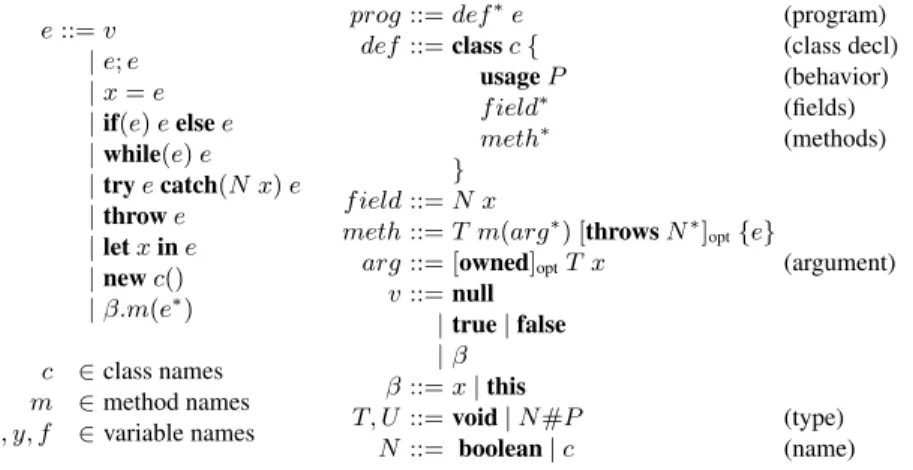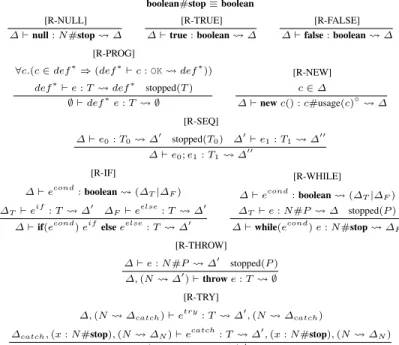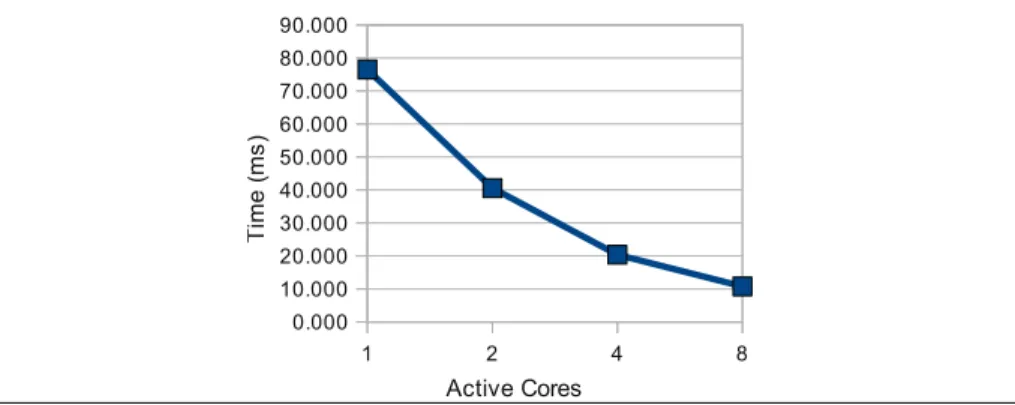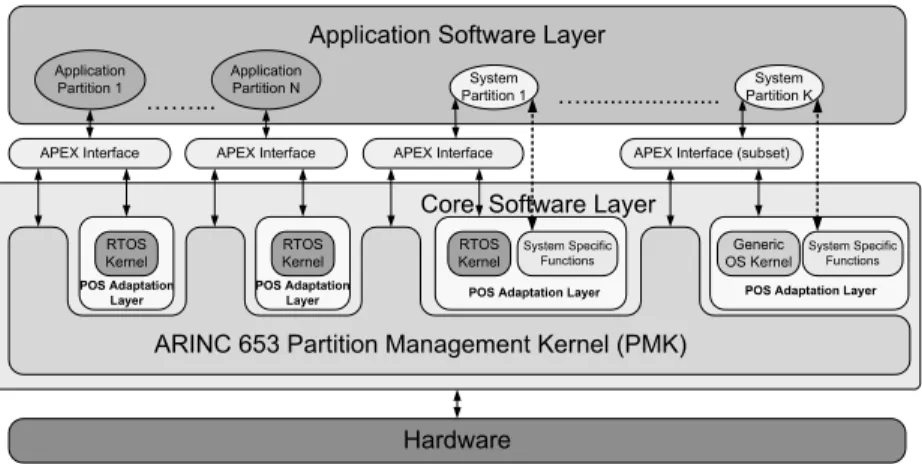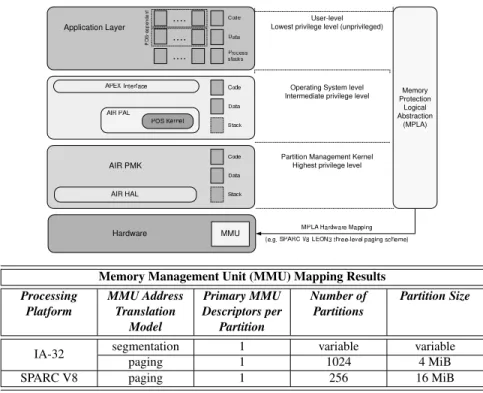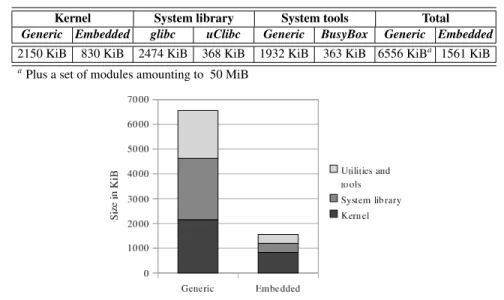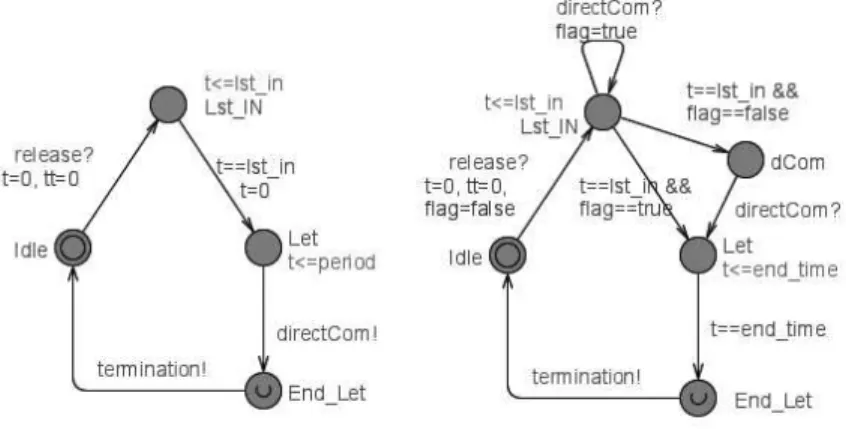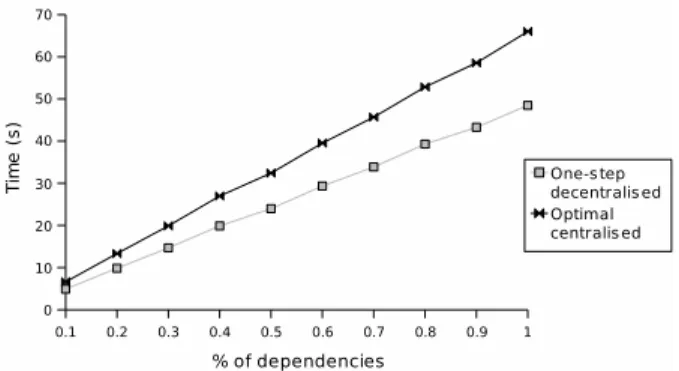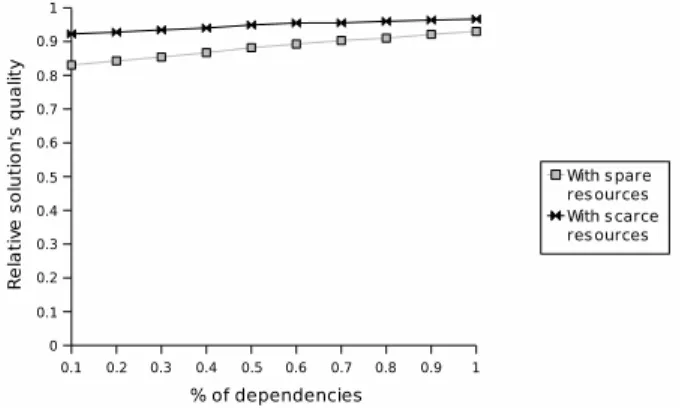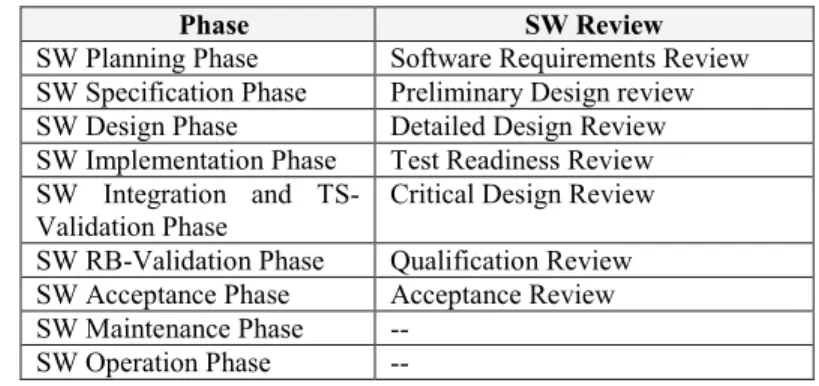INForum
Simp´
osio de Inform´
atica
2009
Edi¸c˜ao: Faculdade de Ciˆencias da Universidade de Lisboa Editores: Lu´ıs Rodrigues e Rui Lopes
Design Gr´afico: Tiago Reis Fotografia: Dulicon S.A. Impress˜ao: Serigrafia Varatojo Ano: 2009
Mensagem do Presidente da Comiss˜
ao
Coordenadora
Bem-vindo `a primeira edi¸c˜ao do INForum, Simp´osio de Inform´atica.
Em nome da Comiss˜ao Organizadora, ´e com imensa satisfa¸c˜ao que lhe dou as boas-vindas ao INForum, que se estreia este ano na Faculdade de Ciˆencias da Universidade de Lisboa.
O INForum tem como principal objectivo reunir anualmente a comunidade portuguesa de investiga¸c˜ao em Inform´atica, proporcionando a sua interac¸c˜ao, a divulga¸c˜ao e discuss˜ao de trabalhos, e o contacto com personalidades de reconhecido impacto internacional na ´area. O INForum ´e um simp´osio multi-disciplinar, abrangente e dinˆamico com a selec¸c˜ao anual do conjunto de t´opicos abordados. Desta forma, ´e simultaneamente promovida a massa cr´ıtica para o fortalecimento e evolu¸c˜ao da Inform´atica no pa´ıs e criado espa¸co para a emergˆencia de novos interesses de investiga¸c˜ao.
O alvo do simp´osio ´e essencialmente nacional, alunos e docentes de cursos de p´os-gradua¸c˜ao em Inform´atica oferecidos na maioria das institui¸c˜oes de en-sino superior nacionais, investigadores das mais de duas dezenas de unidades de investiga¸c˜ao reconhecidas pela Funda¸c˜ao para a Ciˆencia e a Tecnologia e de um n´umero crescente de empresas com resultados de I&D de grande relevˆancia internacional. Por´em, com a predominˆancia de submiss˜oes em l´ıngua inglesa ´e facilitado o reconhecimento do INForum internacionalmente e, uma vez consol-idado, ser´a natural esperar o contributo da vasta comunidade de investigadores lus´ofonos.
O programa t´ecnico do INForum 2009 ´e rico e diverso no conjunto de prob-lemas abordados. Em n´umeros, o evento foi estruturado em 10 t´opicos, 48 apre-senta¸c˜oes, envolveu 30 organizadores, 198 membros de comiss˜oes de programa e 149 revisores cient´ıficos. O programa conta ainda com 3 ilustres oradores convi-dados: o Prof. Paulo Ver´ıssimo, da Universidade de Lisboa, que aborda os riscos da seguran¸ca de infraestruturas de informa¸c˜ao cr´ıtica, o Prof. Ant´onio Cˆamara, da YDreams, que nos apresenta a sua vis˜ao sobre os desafios da m´edia digital e o Dr. Diogo Vasconcelos, da Cisco, que elabora sobre o papel da tecnologia na inova¸c˜ao social.
A elabora¸c˜ao de um programa cient´ıfico t˜ao diverso e envolvendo tantas pessoas ´e um processo exigente. Em nome da Comiss˜ao Coordenadora, apresento os nossos melhores agradecimentos `a empenhada colabora¸c˜ao dos organizadores de cada t´opico e `a excepcional coordena¸c˜ao dos Prof. Lu´ıs Rodrigues e Prof. Rui Pedro Lopes.
Mi-randa agrade¸co a sua constante disponibilidade e dedica¸c˜ao que, n˜ao raramente, ultrapassou as responsabilidades da organiza¸c˜ao local.
`
A Comiss˜ao para a Imagem e Divulga¸c˜ao, Prof. Dulce Domingos e Prof. Jorge Sousa Pinto, o nosso obrigado pela atempada e abrangente divulga¸c˜ao das v´arias chamadas `a participa¸c˜ao no INForum. O nosso agradecimento tamb´em `a Dra. B´arbara Barroso, ao Eng. Paulo Pombinho, ao Dr. Tiago Grego e ao Eng. Miguel Matos por todo o apoio gr´afico e tecnol´ogico dispensado `a organiza¸c˜ao do evento.
Na sua estreia, v´arias empresas e organiza¸c˜oes apoiaram e acompanharam com interesse o INForum: Microsoft, Hewlett-Packard, Critical Software, Banco Esp´ırito Santo, Ordem dos Engenheiros, Large-Scale Informatics Systems Lab-oratory (FCUL), Centro de Ciˆencias e Tecnologias de Computa¸c˜ao (UM), In-stituto de Engenharia Electr´onica e Telem´atica de Aveiro (UA) e Center for Informatics and Systems of the University of Coimbra (UC). A todos o nosso muito obrigado.
Rui Oliveira
Mensagem da Comiss˜
ao de Programa
Bem-vindos ao INForum – Simp´osio de Inform´atica de 2009. Neste primeiro ano o programa inclui 40 artigos longos e 8 artigos curtos, seleccionados de um conjunto de 88 submiss˜oes. Os artigos foram submetidos a um dos t´opicos escolhidos pela comiss˜ao coordenadora para este ano:
– Compiladores, Linguagens de Programa¸c˜ao e Tecnologias Relacionadas (CORTA) – Computa¸c˜ao Distribu´ıda e de Larga Escala
– Computa¸c˜ao M´ovel e Ub´ıqua (CMU) – Encontro de Neg´ocios Digitais – Engenharia Conduzida por Modelos
– Processamento de Dados, Informa¸c˜ao e Linguagem – Sistemas Inteligentes
– Seguran¸ca de Sistemas e Redes de Computadores – Sistemas Embebidos e de Tempo-Real
– XML: Aplica¸c˜oes e Tecnologias Associadas (XATA)
Cada t´opico possui uma comiss˜ao cient´ıfica pr´opria, respons´avel por recolher a avalia¸c˜ao e seleccionar artigos. Foram aceites submiss˜oes dos coordenadores de cada t´opico tendo, neste caso, as avalia¸c˜oes sido recolhidas por n´os e inseridas de forma an´onima. As submiss˜oes dos nossos pr´oprios alunos foram tamb´em recolhidas pelos coordenadores dos t´opicos, garantindo o anonimato.
Atendendo a que v´arios trabalhos de qualidade n˜ao foram seleccionados para apresenta¸c˜ao e inclus˜ao nas actas, o INForum inclui uma sess˜ao de “Trabalhos em Curso”, que pretende promover a sua divulga¸c˜ao e proporcionar aos seus autores a recolha de sugest˜oes e coment´arios. Finalmente, o programa conta com a participa¸c˜ao de trˆes excelentes oradores convidados.
Alguns dos t´opicos do INForum correspondem a eventos j´a com alguma tradi¸c˜ao em Portugal como a CMU, o CORTA ou o XATA. Outros foram orga-nizados de ra´ız para este evento. Conciliar realidades distintas, com diferentes culturas, tradi¸c˜oes e dimens˜oes num ´unico evento ´e um desafio estimulante. Como coordenadores, definimos o n´umero alvo de avalia¸c˜oes por artigo submetidos (4), tent´amos harmonizar os crit´erios usados em cada t´opico e, em fun¸c˜ao do n´umero e qualidade de submiss˜oes em cada t´opico, definimos valores de referˆencia para as taxas de aceita¸c˜ao. Gra¸cas `a excelente coopera¸c˜ao dos v´arios coordenadores dos diferentes t´opicos, a quem publicamente agradecemos, julgamos que se con-seguiu um programa com grande coerˆencia, em que o resultado final ´e muito mais do que a soma das partes.
Antes de acabar, n˜ao podemos deixar de agradecer o apoio que sempre re-cebemos do presidente da comiss˜ao coordenadora, Prof. Rui Oliveira, assim como dos membros da organiza¸c˜ao local, Prof. Ana Afonso e Prof. Hugo Miranda.
Foi uma honra servir o INForum na sua primeira edi¸c˜ao,
Organiza¸c˜
ao
O INForum’09 ´e organizado pela Faculdade de Ciˆencias da Universidade de Lisboa, onde decorrem as sess˜oes.
Comiss˜
oes
Comiss˜ao de Programa: Lu´ıs Rodrigues (I.S.T.)
Rui Pedro Lopes (I.P. Bragan¸ca)
Comiss˜ao Organizadora: Ana Paula Afonso (U. Lisboa)
Hugo Miranda (U. Lisboa)
Comiss˜ao para a Imagem e Divulga¸c˜ao: Dulce Domingos (U. Lisboa) Jorge Sousa Pinto (U. Minho)
Comiss˜ao Coordenadora: Ademar Aguiar (U. Porto)
Ana Moreira (U. N. Lisboa) Ant´onio Casimiro (U. Lisboa) Eduardo Tovar (I.P. Porto) Fernando Lobo (U. Algarve) Jos´e Lu´ıs Oliveira (U. Aveiro) Lu´ıs Rodrigues (I.S.T.) Marco Vieira (U. Coimbra) Rui Lopes (I.P. Bragan¸ca)
Rui Oliveira (U. Minho), Presidente Sim˜ao Sousa (U. Beira Interior)
Comiss˜
oes de Programa
Compiladores, Linguagens de Programa¸c˜ao e Tecnologias Relacionadas (CORTA)
Ant´onio Leit˜ao (U. T. Lisboa),chair Ademar Aguiar (U. Porto)
Bastian Cramer ( U. Paderborn) Boˇstjan Slivnik (U. Ljubljana) Carlos Fonseca (U. Algarve) Ivan Lukovic (U. Novi Sad) Joost Visser, (SIG)
Jorge Sousa Pinto (U. Minho) Jo˜ao Jos´e Almeida (U. Minho) Jo˜ao Costa Seco (U. N. Lisboa) Jo˜ao Saraiva (U. Minho) Lu´ıs Caires (U. N. Lisboa)
Marjan Mernik (U. Maribor) Matej ˇCrepinˇsek (U. Maribor) Mirjana Ivanovic (U. Novi Sad) Paulo Matos (I.P. Bragan¸ca) Pedro Guerreiro (U. Algarve) Pedro Henriques (U. Minho)
Rog´erio Dias Paulo (Efacec) Salvador Abreu (U. ´Evora) Tomaz Kosar (U. Maribor) Vasco Vasconcelos (U. Lisboa) Vitor Santos (Microsoft Portugal)
Computa¸c˜ao Distribu´ıda e de Larga Escala
Alysson Bessani (U. Lisboa) Ant´onio Sousa (U. Minho) David Martins de Matos (I.S.T.) Henrique Domingos (U. N. Lisboa) Hugo Miranda (U. Lisboa)
Jo˜ao Louren¸co (U. N. Lisboa) Jo˜ao Paulo Carvalho (I.S.T.)
Jos´e Leal (Inst. Gulbenkian de Ciˆencia) Jos´e Orlando Pereira (U. Minho) Jos´e Vermelhudo (NAV)
Lu´ıs Miguel Pinho (I. S. E. Porto)
Lu´ıs Moura e Silva (U. Coimbra) Lu´ıs Oliveira e Silva (I.S.T.) Lu´ıs Veiga (I.S.T.),chair
Nuno Duro (Evolve Space Solutions) Paula Prata (U. Beira Interior) Paulo Ferreira (I.S.T.)
Paulo Marques (U. Coimbra)
Paulo Vilela (Sun Portugal) Pedro Fur-tado (U. Coimbra)
Computa¸c˜ao M´ovel e Ub´ıqua
Adriano Moreira (U. Minho) Ana Paula Afonso (U. Lisboa) Andr´e Z´uquete (U. Aveiro) Carlos Baquero (U. Minho) Carlos Bento (U. Coimbra)
Eduardo Dias (U. N. Lisboa, U. ´Evora) Frutuoso Silva (U. Beira Interior) Joaquim Jorge (I.S.T.)
L´ucio Ferr˜ao (OutSystems) Luis Veiga (I.S.T.)
M´ario Alves (I. S. E. Porto) Markus Endler (PUC-Rio) Miguel Monteiro (U. Porto) Nuno Pregui¸ca (U. N. Lisboa) Paulo Ferreira (U. T. Lisboa),chair Pedro Ara´ujo (U. Beira Interior) Renato Cerqueira (PUC-Rio) Rui Jos´e (U. Minho)
Vitor Rodrigues (Movensis)
Processamento de Dados, Informa¸c˜ao e Linguagem
Andreas Wichert (I.S.T.) Bruno Martins (I.S.T.), chair David Matos (I.S.T.)
Francisco Couto (U. Lisboa) Ga¨el Dias (U. Beira Interior) Helena Galhardas (I.S.T.),chair Irene Rodrigues (U. ´Evora) Jo˜ao Pereira (I.S.T.)
Lu´ısa Coheur (I.S.T.),chair Maribel Santos (U. Minho)
Orlando Belo (U. Minho) Paulo Car-reira (I.S.T.)
Encontro de Neg´ocios Digitais
Alberto Silva (I.S.T.) Ana Paula Rocha (U. Porto) Ant´onio Mesquita (Forum B2B) Ant´onio Palma dos Reis (ISEG) Filomena Lopes (U. Portucalense) Henrique S. Mamede (U. Aberta) Isabel Ramos (U. Minho)
J. Dias Coelho (U. N. Lisboa), chair Jo˜ao Varaj˜ao (U. Tr´as-os-Montes e Alto Douro)
Jorge Pereira (Infosistema)
Jos´e Adriano Pires (I.P. Bragan¸ca) Leonel Santos (U. Minho)
Lu´ıs Amaral (U. Minho),chair
Luis Borges Gouveia (U. Fernando Pes-soa)
Lu´ıs Cabrita (Prol´ogica) Lu´ıs Vidigal (APDSI)
Manuela Cunha (I.P. C´avado Ave) Paula Morais (U. Portucalense) Paulo Rita (ISCTE)
Paulo Rupino (U. Coimbra)
Ramiro Gon¸calves (U. Tr´as-os-Montes e Alto Douro)
Rui Quaresma (U. ´Evora) V´ıtor Santos (Microsoft Portugal)
Engenharia Conduzida por Modelos
Alberto Silva (I.S.T.),chair Ana Paiva (U. Porto) Ant´onio Leit˜ao (I.S.T.) David Ferreira (I.S.T.)
Fernando Brito de Abreu (U. N. Lis-boa)
Jo˜ao Ara´ujo (U. N. Lisboa)
Jo˜ao Pascoal Faria (U. Porto),chair Jo˜ao Paulo Carvalho (Quidgest) Jo˜ao Saraiva (I.S.T.)
Jos´e Borbinha (I.S.T.) Leonel N´obrega (U. Madeira) Levi L´ucio (U. Genebra)
Lu´ıs Pedro (U. Genebra) Miguel Calejo (Declarativa)
Nuno Nunes (U. Madeira) Ricardo Machado (U. Minho) Vasco Amaral (U. N. Lisboa),chair
Sistemas Inteligentes
Ant´onio Abelha (U. Minho),chair Carlos Ramos (I.P. Porto)
Cesar Analide (U. Minho) Costin Badica (U. Craiova) Giuseppe Mangioni (U. Catania) Goreti Marreiros (I.P. Porto) Jo˜ao Balsa (U. Lisboa)
Jos´e Machado (U. Minho),chair
Jos´e Neves (U. Minho),chair Luis Moniz (U. Lisboa) Manuel Santos (U. Minho) Paulo Cortez (U. Minho) Paulo Novais (U. Minho),chair Vitor Alves (U. Minho)
Zhaohao Sun (U. Ballarat)
Seguran¸ca de Sistemas e Redes de Computadores
Alysson Bessani (U. Lisboa) Andr´e Z´uquete (U. Aveiro)
Edmundo Monteiro (U. Coimbra), chair
Henrique Domingos (U. N. Lisboa) Henrique Madeira (U. Coimbra) Henrique Santos (U. Minho) Jo˜ao Barros (U. Porto) Jos´e Alegria (PT)
Jos´e Pina Miranda (Multicert) Luis Antunes (U. Porto)
Manuel Bernardo Barbosa (U. Minho)
Marco Vieira (U. Coimbra) Miguel Correia (U. Lisboa) Nuno Neves (U. Lisboa),chair Paulo Ferreira (I.S.T.)
Paulo Sim˜oes (U. Coimbra) Paulo Sousa (U. Lisboa) Paulo Ver´ıssimo (U. Lisboa) Pedro Ad˜ao (I.S.T.)
Ricardo Chaves (I.S.T.)
Sim˜ao Melo Sousa (U. Beira Interior)
Sistemas Embebidos e de Tempo-Real
Adelino Silva (LINCIS) Carlos Almeida (I.S.T.) Helder Silva (EDISOFT) Jo˜ao Almeida (Link Consulting) Jo˜ao Cardoso (U. Porto) Jo˜ao Cunha (ISEC) Jo˜ao Fernandes (U. Minho) Joaquim Ferreira (U. Lisboa) Jos´e Fonseca (U. Aveiro) Jos´e Malaquias (ISA)
Jos´e Metrˆolho (I. P. Castelo Branco) Jos´e Rufino (U. Lisboa),chair Leonel Sousa (I.S.T.)
Lu´ıs Almeida (U. Porto) Lu´ıs Gomes (U. N. Lisboa)
Lu´ıs Miguel Pinho (I. S. E. Porto), chair
M´ario Calha (U. Lisboa)
Mike Rennie (DEIMOS Engenharia) Nuno Pereira (I.P. Porto)
Nuno Silva (Critical Software) Pedro Fonseca (Micro I/O) Rui Camolino (Brisa)
Sim˜ao Sousa (U. Beira Interior) Tobias Schoofs (Skysoft Portugal)
XML: Aplica¸c˜oes e Tecnologias Associadas (XATA)
Ademar Aguiar (U. Porto)
Alberto Rodrigues da Silva (I.S.T.) Alberto Sim˜oes (U. Minho),chair Alda Lopes Gan¸carski (INT) Ana Paula Afonso (U. Lisboa) Benedita Malheiro (I. S. E. Porto) Carlos Dam´asio (U. N. Lisboa) Cristina Ribeiro (U. Porto) Daniela da Cruz (U. Minho) Francisco Couto (U. Lisboa) Gabriel David (U. Porto) Giovani Librelotto (UFSM) Jo˜ao Correia Lopes (U. Porto) Jo˜ao Moura Pires (U. N. Lisboa) Jos´e Carlos Ramalho (U. Minho)
Jos´e Jo˜ao Almeida (U. Minho) Jos´e Lu´ıs Borbinha (I.S.T.) Jos´e Paulo Leal (U. Porto) Luis Carri¸co (U. Lisboa) Luis Ferreira (I.P. C´avado Ave) Marta Jacinto (ITIJ)
Miguel Ferreira (U. Minho) Nuno Horta (I.S.T.)
Paulo Marques (U. Coimbra) Pedro Henriques (U. Minho) Rui Lopes (U. Lisboa) Salvador Abreu (U. ´Evora) Stephane Gan¸carski (LIP6)
Comiss˜ao de selec¸c˜ao do pr´emio BES
Cristina Videira Lopes (U. California), Irvine, USA Jos´e Luiz Fiadeiro (U. Leicester), UK
Miguel Castro (Microsoft Research), UK Pedro Trancoso (U. Cyprus), Cyprus
Revisores Cient´ıficos
Adelino Silva Ademar Aguiar Adriano Moreira Alberto Silva Alberto Sim˜oes Alda Lopes Gan¸carski Alysson Bessani Ana Afonso Ana Paiva Ana Rocha Andr´e Z´uquete Andreas Wichert Ant´onia Lopes Ant´onio Leit˜ao Ant´onio Sousa Bastian Cramer Benedita Malheiro Bostjan Slivnik Bruno Martins Carlos Almeida Carlos Baquero Carlos Dam´asio Carlos Fonseca Carlos Ribeiro Cristina Ribeiro Daniela da Cruz David FerreiraDavid Martins de Matos Diana Santos Edmundo Monteiro Eduardo Dias Fernando Abreu Francisco Couto Frutuoso Silva Gabriel David Gael Dias Giovani Librelotto Helder Silva Helena Galhardas Henrique Mamede Henrique Santos Hugo Manguinhas Hugo Miranda Irene Rodrigues Ivan Lukovic Jeferson Souza Jo˜ao Almeida Jo˜ao Ara´ujo Jo˜ao Cardoso Jo˜ao Carvalho Jo˜ao Correia Lopes Jo˜ao Craveiro Jo˜ao Cunha Jo˜ao Faria Jo˜ao Fernandes Jo˜ao Louren¸co Jo˜ao Moura Pires Jo˜ao Paulo Carvalho Jo˜ao Pereira
Jo˜ao Saraiva Jo˜ao Seco Joaquim Ferreira Joost Visser Jorge Sousa Pinto Jos´e Alegria Jos´e Borbinha Jos´e Carlos Ramalho Jos´e Fonseca
Jos´e Malaquias Jos´e Metrˆolho Jos´e Paulo Leal Jos´e Pereira
Nuno Pregui¸ca Nuno Silva Orlando Belo Paula Morais Paula Prata Paulo Carreira Paulo Ferreira Paulo Marques Paulo Matos Paulo Quaresma Paulo Rupino Paulo Sim˜oes Paulo Sousa Paulo Ver´ıssimo
Paulo Vilela P´avel Calado Pedro Ad˜ao Pedro Fonseca Pedro Furtado Pedro Guerreiro Pedro Henriques Ramiro Gon¸calves Renato Cerqueira Ricardo Chaves Ricardo Machado Rog´erio Paulo Rui Camolino Rui Dinis Sousa
Rui Jos´e Rui Lopes Rui Oliveira Rui Quaresma Salvador Abreu Sim˜ao Sousa Stephane Gan¸carski Tobias Schoofs Tomaz Kosar Vasco Amaral Vasco Vasconcelos Vitor Santos
Xavier G´omez Guinovart
Apoios
Banco Esp´ırito Santo Critical Software Hewlett-Packard Microsoft
Ordem dos Engenheiros
Center for Informatics and Systems of the Univ. of Coimbra, U. Coimbra Centro de Ciˆencias e Tecnologias da Computa¸c˜ao, U. Minho
´Indice
INForum – Simp´
osio de Inform´
atica 2009
Oradores Convidados
. . . 1 Riscos de Seguran¸ca das Infraestruturas de Informa¸c˜ao Cr´ıtica ouporque Bang! ´e diferente de Crash . . . 3 Paulo Ver´ıssimo
Challenges in Digital Media . . . 5 Ant´onio Cˆamara
(Sem T´ıtulo) . . . 6 Diogo Vasconcelos
Sess˜
ao 1A: Compiladores, Linguagens de
Programa¸c˜
ao e Tecnologias Relacionadas
(CORTA)
. . . 7 Simulation and animation of visual languages (invited talk). . . 9Bastian Cramer
An Exception Aware Behavioral Type System for Object-Oriented
Programs . . . 11 Filipe Milit˜ao and Lu´ıs Caires
JaSPEx: Speculative Parallel Execution of Java Applications . . . 23 Ivo Anjo and Jo˜ao Cachopo
Domain-Specific Languages: A Theoretical Survey. . . 35 Nuno Oliveira, Maria Pereira, Pedro Henriques and Daniela Cruz
Sess˜
ao 1B: Sistemas Embebidos e de Tempo-Real
. . . 47 Flexible Operating System Integration in Partitioned Aerospace Systems. 49Jo˜ao Craveiro, Jos´e Rufino, Tobias Schoofs and James Windsor
Verifica¸c˜ao de Modelos em Programas HTL . . . 61 Joel Silva Carvalho and Sim˜ao Melo de Sousa
A Fast Convergence Coordination Protocol for Cooperative Open
RTEMS Improvement - Space Qualification of RTEMS Executive . . . 86 Helder Silva, Jos´e Sousa, Daniel Freitas, S´ergio Faustino, Alexandre
Constantino and Manuel Coutinho
Sess˜
ao 1C: Seguran¸ca de Sistemas e Redes de
Computadores
. . . 99 Building an Automata towards Reverse Protocol Engineering. . . 101Jo˜ao Antunes and Nuno Neves
Efficient State Transfer for Recovery-Based Byzantine-Fault-Tolerant
State Machine Replication . . . 113 Rog´erio Correia and Paulo Sousa
Constru¸c˜ao Observ´avel de um Sistema de Quorum de N´os N˜ao-Sybil
na Vizinhan¸ca R´adio de uma Rede Ad Hoc Sem Fios . . . 125 Diogo M´onica, Jo˜ao Leit˜ao, Lu´ıs Rodrigues and Carlos Ribeiro
Uma arquitectura para um servi¸co de encaminhamento seguro em redes
de sensores sem fios . . . 137 Pedro Amaral and Henrique Domingos
Sess˜
ao 2A: Compiladores, Linguagens de
Programa¸c˜
ao e Tecnologias Relacionadas
(CORTA)
. . . 153 VisualLISA: A Domain Specific Visual Language for Attribute Grammars 155Nuno Oliveira, Maria Jo˜ao Varanda Pereira, Pedro Henriques, Daniela da Cruz and Bastian Cramer
ATOM: Automatic Transaction-Oriented Memoization. . . 168 Hugo Rito and Jo˜ao Cachopo
Comparison of XAML and C# Forms using Cognitive Dimension
Framework. . . 180 Marjan Mernik, Tomaz Kosar, Matej Crepinsek, Pedro Rangel
Henriques, Daniela da Cruz, Maria Jo˜ao Varanda Pereira and Nuno Oliveira
Iterators, Recursors and Interaction Nets (short paper) . . . 192 Ian Mackie, Jorge Sousa Pinto and Miguel Vila¸ca
On Structuring Contextual Logic Programming (short paper). . . 197 Salvador Abreu, Vitor Nogueira and Daniel Diaz
Sess˜
ao 2B: Computa¸c˜
ao M´
ovel e Ub´ıqua
. . . 201 RFID based Monitoring and Access Control System . . . 203PIPE: Uma infra-estrutura gen´erica de servi¸cos para ambientes de
computa¸c˜ao ub´ıqua . . . 215 Bruno Felix and Nuno Pregui¸ca
Unified Cooperative Location System. . . 227 David Navalho and Nuno Pregui¸ca
Towards a Context Aware Multimodal Hand-Held Device . . . 239 Tiago Reis, Carlos Duarte, Lu´ıs Carri¸co and Romeu Carvalho
Sess˜
ao 2C: Processamento de Dados, Informa¸c˜
ao e
Linguagem
. . . 251 Data Access Pattern Analysis based on Bayesian Updating. . . 253Stoyan Garbatov, Jo˜ao Cachopo and Jo˜ao Pereira
Automated Social Network Epidemic Data Collector . . . 263 Lu´ıs F. Lopes, Jo˜ao M. Zamite, Bruno C. Tavares, Francisco M.
Couto, Fabr´ıcio Silva and M´ario J. Silva.
ThermInfo: Collecting and presenting thermochemical properties. . . 273 Ana Teixeira, Rui Santos and Francisco Couto
A Comparison of Different Approaches for Assigning Geographic
Scopes to Documents. . . 285 Ivo Anast´acio, Bruno Martins and P´avel Calado
Sess˜
ao 3A: XML: Aplica¸c˜
oes e Tecnologias Associadas
(XATA)
. . . 297 Schema Languages for XML. . . 299Hugo Manguinhas
schem@Doc: a web-based XML Schema visualizer . . . 311 Jos´e Paulo Leal and Ricardo Queir´os
GuessXQ, an inference Web-engine for querying XML documents
(short paper). . . 322 Daniela da Cruz, Fl´avio Xavier Ferreira, Pedro Rangel Henriques,
Alda Lopes Gancarski and Bruno Defude
An importer of virtual 3D City Models datasets into a spatiotemporal
database (short paper). . . 326 Wagner Franchin, Alexandre Carvalho, Jos´e Moreira, Ant´onio
Augusto de Sousa and Cristina Ribeiro
An´alise do custo e da viabilidade de um sistema P2P com visibilidade
completa. . . 333 Sim˜ao Mata, Jos´e Legatheaux Martins, S´ergio Duarte and
Margarida Mamede
Custo da Comuta¸c˜ao Dinˆamica de Protocolos de Comunica¸c˜ao. . . 345 Cristina Fonseca, Liliana Rosa and Lu´ıs Rodrigues
A Distributed Bootstrapping Protocol for Overlay Networks. . . 357 Miguel Matos, Ant´onio Sousa, Jos´e Pereira and Rui Oliveira
Sess˜
ao 3C: Computa¸c˜
ao M´
ovel e Ub´ıqua
. . . 369 Algoritmos de Difus˜ao para Protocolos de Encaminhamento em RedesAd Hoc sem Fios . . . 371 Jo˜ao Matos and Hugo Miranda
FEW Phone File System. . . 383 Jo˜ao Soares and Nuno Pregui¸ca
Wiinteraction: A study on smart spaces interaction using a wiimote . . . 395 Hugo Seixas, Nuno Salgado and Rui Jos´e
Sess˜
ao 4A: XML: Aplica¸c˜
oes e Tecnologias Associadas
(XATA)
. . . 407 XAGra - An XML dialect for Attribute Grammars . . . 409Nuno Oliveira, Pedro Rangel Henriques, Daniela da Cruz and Maria Jo˜ao Varanda Pereira
Extending the Learning Object definition to represent Programming
Problems . . . 421 Jos´e Paulo Leal and Ricardo Queir´os
Relational Databases Digital Preservation. . . 433 Ricardo Andr´e Pereira Freitas and Jos´e Carlos Ramalho
Sharing botanical information using geospatial databases. . . 443 Jo˜ao Silva, Cristina Ribeiro and Jo˜ao Correia Lopes
Sess˜
ao 4B: Computa¸c˜
ao Distribu´ıda e de Larga Escala
455Dependability in Aggregation by Averaging . . . 457 Paulo Jesus, Carlos Baquero and Paulo S´ergio Almeida
D2STM: Mem´oria Transaccional em Software Distribu´ıda e Confi´avel. . . . 471 Maria Couceiro, Paolo Romano, Nuno Carvalho and Lu´ıs Rodrigues
FT-OSGi: Extens˜oes `a Plataforma OSGi para Tolerˆancia a Faltas
(short paper). . . 495 Carlos Torr˜ao, Nuno Carvalho and Lu´ıs Rodrigues
Capi: Cloud Computing API (short paper) . . . 499 Bruno Costa, Miguel Matos and Ant´onio Sousa
Sess˜
ao 4C: Multi-track
. . . 503 Comunidades Virtuais ao Servi¸co do Ensino . . . 506Vitor Santos and Lu´ıs Amaral
Use of MS DSL Tools in the development process of a Domain-Specific
Language . . . 515 Andr´e Rosa, Vasco Amaral and Bruno Barroca
Reverse Engineering of GUI Models . . . 527 Andr´e M. P. Grilo, Ana C. R. Paiva and Jo˜ao Pascoal Faria
Information Extraction sub-tasks: a survey (short paper). . . 540 Gon¸calo Sim˜oes, Helena Galhardas and Lu´ısa Coheur
Virtual Health Card System (short paper). . . 545 Tiago Pedrosa, Carlos Costa, Rui Pedro Lopes and Jos´e Lu´ıs
Oliveira
Paulo Ver´ıssimo
Paulo Ver´ıssimo ´e doutorado e agregado em Eng. Electrot´ecnica e de Computa-dores, pelo IST. ´E professor no Departamento de Inform´atica (DI) da Faculdade de Ciˆencias da Universidade de Lisboa e Director do LASIGE, laborat´orio de in-vestiga¸c˜ao do DI. ´EFellow do IEEE. ´E editor associado doElsevier Int’l Journal on Critical Infrastructure Protection, foi editor associado dasIEEE Transactions on Dependable and Secure Computing e pertenceu ao European Security & De-pendability Advisory Board. Foi Presidente do IEEE Technical Committee on Fault Tolerant Computing e doSteering Committee da conferˆencia DSN e mem-bro do Conselho Executivo da “CaberNet European Network of Excellence”. Foi coordenador do projecto Europeu IST/FET CORTEX. Paulo Ver´ıssimo lidera o Grupo de investiga¸c˜ao Navigators integrado no LASIGE e interessa-se cor-rentemente por: arquitectura, algoritmos e subsistemas de suporte (middleware) para sistemas distribu´ıdos, embebidos e permeantes (pervasive), nas facetas de adaptabilidade em tempo-real e seguran¸ca e tolerˆancia a faltas/intrus˜oes. Tem mais de 145 publica¸c˜oes internacionais com revisor, e ´e co-autor de cinco livros internacionais.
Riscos de Seguran¸ca das Infraestruturas de Informa¸c˜ao Cr´ıtica ou porque Bang! ´e diferente de Crash
Esta palestra ´e inspirada numa interven¸c˜ao recente na revista IEEE Security & Privacy, January 2008, em resposta a uma pergunta no “Information Assurance Technology Forecast 2008”:
Sec&Priv: What’s the nature and magnitude of risk that critical information infrastructure (CII) faces over the next 15 years? By “critical”, I mean the part whose failure would have major effects on the nation, such as economic loss or loss of life.
Ant´
onio Cˆ
amara
Ant´onio Cˆamara ´e professor na Faculdade de Ciˆencias e Tecnologia da Univer-sidade Nova de Lisboa. Foi professor convidado na Cornell University (1988-89) e no MIT (1998-99). Esteve ligado ao estudo de impacto ambiental do Alqueva, `
a reconvers˜ao ambiental da Expo’98 e ao Sistema Nacional de Informa¸c˜ao Ge-ogr´afica. Foi fundador Y-Dreams em Junho de 2000, empresa que dirige actual-mente.
Challenges in Digital Media
YDreams has developed YVision, a platform for digital media including com-puter vision, embodied interaction, embodied agents and simulation. The main concepts underlying this platform will be reviewed. YVision addresses “normal” digital media problems. YDreams has been working in three challenging prob-lems that are beyond “normalcy”. They include:
– Providing each city driver with an optimal route using information processed from traffic cameras and other sensors;
– Helping a famous soccer coach in optimizing space for his team, both on offense and defense, using video images;
– Translate partial diiferential equations into chemical reactions to enable chemical computing in any surface.
Diogo Vasconcelos
Licenciado em Direito, na Universidade Cat´olica do Porto. P´os-graduado em Di-reito de Comunica¸c˜ao (Universidade de Coimbra) e em Gest˜ao para Licenciados em Direito (Universidade Cat´olica do Porto). Frequentou o mestrado em Ciˆencia Pol´ıtica, na Universidade Cat´olica de Lisboa.
A n´ıvel pol´ıtico, Diogo Vasconcelos foi vice-presidente do PSD de Maio de 1999 a Mar¸co de 2000 e desde essa altura at´e `as ´ultimas elei¸c˜oes, em Mar¸co de 2001 foi o porta-voz do PSD para a ´area da sociedade da informa¸c˜ao. Em Mar¸co de 2001 foi eleito deputado `a Assembleia da Rep´ublica pelo c´ırculo do Porto e em Outubro do mesmo ano foi nomeado gestor da UMIC – Unidade de Miss˜ao In-ova¸c˜ao e Conhecimento, a entidade tutelada pelo Ministro Adjunto do Primeiro-Ministro para a sociedade da informa¸c˜ao, governo electr´onico e inova¸c˜ao. Diogo Vasconcelos ´e igualmente administrador n˜ao executivo da Agˆencia de Inova¸c˜ao e do Instituto S´a Carneiro. Como estudante, foi presidente da Associa¸c˜ao de Estudantes da Escola Secund´aria Ant´onio Nobre, presidente da Associa¸c˜ao de Estudantes da Faculdade de Direito da Universidade Cat´olica, presidente e fun-dador da Federa¸c˜ao Acad´emica do Porto. Representou, eleito em ENDA, os estudantes do Ensino Superior no Conselho Nacional de Educa¸c˜ao.
Como empreendedor, foi fundador de v´arias empresas nas ´areas de conte´udos (produ¸c˜ao multim´edia e revista “Ideias & Neg´ocios”), ambiente e foi co-fundador da primeira capital de risco independente do portuguesa. Deixou as suas activi-dades profissionais para se dedicar em exclusivo `a UMIC.
Foi Vice-presidente da Associa¸c˜ao Nacional de Jovens Empres´arios (1996-2001), no ˆambito da qual lan¸cou a Academia dos Empreendedores. Integrou os conselhos consultivos de diversos centros de inova¸c˜ao e incuba¸c˜ao de empresas.
Sess˜
ao 1A: Compiladores, Linguagens de
Programa¸c˜
ao e Tecnologias Relacionadas
Bastian Cramer
Bastian Cramer received his degree in Computer Science from the University of Paderborn, Germany in 2005. Then he joined the research group “Programming Languages and Compilers” of Prof. Kastens at the same university. His research focus is the generation of software from specifications and especially the gener-ation of environments for visual domain specific languages. He has several years of experience in language design in corporation with the automotive industry. Currently he is working on his PhD concerning simulation and animation of visual languages.
Simulation and animation of visual languages
Today, visual languages are often used in the software engineering process to specify a system on a high abstraction level. Generator frameworks are often used to generate environments for visual languages. Hence, it is possible to derive even challenging editors for VLs with modest effort and to use them in rapid development processes. Indeed, today’s software design process focuses on static visual languages. The simulation and animation of such a language could bridge the gap between program and program execution which must always be in the programmers mind.
An Exception Aware Behavioral Type System for
Object-Oriented Programs
Filipe Milit˜ao and Lu´ıs Caires
CITI / Departamento de Inform´atica, Universidade Nova de Lisboa, Portugal
We develop a type system for object oriented languages that combines standard type in-formation with behavioral protocol specifications. The typing rules cover familiar con-structs, as well as exceptions, which are a main novelty in this work: exceptions may cause abrupt control transfer in allowed behaviors, and have been particularly difficult to tackle with behavioral type systems. The type system guarantees protocol fidelity both at the method level and at the class level by checking consistency in the use of fields with the class’ usage protocol. It also ensures that program execution always reaches a safe termination state, even in the presence of behavioral borrowing, that is, temporary aliasing of object references during methods calls.
1
Introduction
The ever increasing software complexity has always been the striving force behind the push for more advanced type systems in an effort to reduce the number of software bugs. Although virtually all modern day verification techniques guarantee the absence of important errors, such as calling non-existing methods or incorrect conversion of data structures, they still leave much room for improvements. Namely, most are incapable of checking the fulfillment of prevalent APIs assumptions such as specific restrictions in the allowed sequences of calls (that is, making sure a protocol is obeyed) or identifying possible sources of interferences in the use of objects (due to aliasing, for instance). Therefore, recent developments in typing methodologies try to address such issues (in-cluding other emerging use cases such as web services and concurrency) to protect programs from non-trivial and frequent mistakes.
We focus on the problem of checking the behavior restrictions in the use of meth-ods, that is, how some objects require specific sequences of calls to be observed in order to function properly. File objects are an usual example: they require to be opened before used and closed at the end (to force flushing out any changes). This behavioral protocol is usually defined in attached documentation and/or checked only at run-time (with any error flagged as an exception). We propose a type system that uses a formal behavior description to statically ensure the absence of behavioral errors in sequential programs, so that such protocols are always obeyed from start to finish. While the idea of exploit-ing behavioral specifications to discipline the usage of objects in programs is not new, in this paper we approach language features much more challenging than in other ap-proaches, such as borrowing behaviors, full class consistency check, and, prominently, exception handling. We have also implemented our type system in a working prototype interpreter and runtime system, theyaklanguage [22].
causes a transition in the allowed behavior. The comments show how the behavior of the new object evolves until it reaches a termination state,stop. This is but a tiny example: our full protocol description language is capable of describing exceptions, choices, and behavior selection based on the result of a call (as illustrated on Section 3.3).
Example 1. Travel example.
classTravelOrder {
usageflight.hotel.(buy+cancel) voidflight(){ ... }
void hotel(){ ... } void buy(){ ... } voidcancel(){ ... } }
lett in
t =new TravelOrder();
//TravelOrder#flight.hotel.(buy+cancel) t.flight(); //TravelOrder#hotel.(buy+cancel) t.hotel(); //TravelOrder#buy+cancel if( ... ) t.buy() //TravelOrder#stop elset.cancel() //TravelOrder#stop
In our language each class declares a behavioral protocol that restricts the use of some of its methods to contexts given by itsusage. The syntax and semantics (Section 2) is similar to the one of mainstream OO languages. The behavioral information is only used by the type system (Section 3), that handles usual expressions such as branches, loops, exceptions and is also able to check the behavior in cases of recursion, behavioral borrowing and subtyping (Section 3.1). The consistency check procedure (Section 3.2) guarantees behaviors are obeyed, both at the method level and at the class level so that fields are used correctly during the lifetime of an object. Finally, in Section 3.3, we briefly address some flexibility issues of the typing rules and give additional examples. The original contributions of this paper include:
– A simplified type annotation that reduces the burden on the programmer (Section 3), namely, by using a consistency check phase (Section 3.2) that automatically handles the behavior of fields in each method. Additionally, our typing rules do not interfere with type abstraction or modularity and are flexible enough not to require a direct mapping of the protocol into code (Section 3.3). Although due to space limitations we cannot include a formal proof, our type system is provably sound [17].
– Addressing changes in behavior due to raised exceptions has not been much ex-plored even if some proposals [14] exex-plored ideas similar to ours, they have many limitations and are not used in an OO language. In this work, we address behavioral exceptions without compromising much expressiveness (Section 3).
– Although we enforce linear aliasing control [21], we do not require all method arguments to possess unique ownerships. Such features are useful to model usual call-by-reference and is conceptually consistent with borrowing behaviors of object references in limited scopes, such as during method calls (details in Section 3).
2
Syntax and Informal Semantics of the Core Language
e::=v |e;e |x=e |if(e)eelsee |while(e)e |tryecatch(N x)e |throwe
|letxine |newc()
|β.m(e∗) c ∈class names m ∈method names x, y, f ∈variable names
prog::=def∗e (program) def ::=classc{ (class decl)
usageP (behavior) f ield∗ (fields) meth∗
(methods) }
f ield::=N x
meth::=T m(arg∗) [throwsN∗] opt{e}
arg::= [owned]optT x (argument) v::=null
|true|false |β
β::=x|this
T, U ::=void|N#P (type) N ::= boolean|c (name)
Fig. 1.Syntax of the core language.
a variable or athispointer (β). Anownedmodifier informs the type system that an ar-gument requires permissions to be returned or stored in a variable in the method’s body (this will be describe in detail in the ownership control section of the type system). Due to lack of space, we cannot fully describe the operational semantics of our language, but this will not hinder much the understanding of the reader since most constructs are standard. Therefore, we move immediately to the most interesting issues in our work, namely the type system.
3
A Behavioral Type System for OO programs
In this section we describe the key ideas behind the design of our type system. We define abehavioral typeto be a pair of standard (Java-like) type with a behavioral description for that type. Thus, our type notation is of the form:
T ype,N ame#Behavior
The first part (Name) refers to a list of method declarations and to theusageprotocol (i.e., the initial behavior), both defined in the class declaration forName. The second part (Behavior) contains the changing protocol (due to a method call, for instance) that is used during the verification. The language for specifying such usage protocols is defined in (Figure 2). As shown in Figure 1 a type’s behavioral protocol is declared after the keywordusagein the class definition.
P, Q, V, O::=m[exception∗].R (method and continuation) |r (recursion label)
|&r(P) (recursion point) |P+P (choice)
|stop (empty)
R::=P
|(true.P) + (false.P)(result based behavioral choice)
exception::=N:P (behavioral exception, ifNraised then change toP)
Fig. 2.Syntax for behavioral descriptions.
method calls (exception), to capture exceptional behavior. We also include a construct to express behavioral alternatives, based on the value returned by of a method call (only for booleans, although such a system could be easily extended to support other enumer-able types). It is convenient to further explain these two novel constructs :
– “m[N :P|...].Q”, the description for a method usage. This construction declares that a method (m) can be called on that specific context and that it may throw any of the exceptions inside the square brackets. More precisely, after an exception of type Nthe allowed behavior for that type changes toP, this is what we call abehavioral exception. When no exception is raise the protocol continues withQ;
– “(true.P) + (false.Q)”, declares a change in the allowed behavior based on the result of a booleancall. Therefore, this construct is only allowed to appear im-mediately after a method usage. This description allows the type system to e.g., distinguish between the availability of thenextmethod in an iterator, depending on the value returned by thehasNextmethod.
The choice construction offers an external decision (where the programmer is free to decide which behavioral path to take); and the exception/result-choice is related to an internal choice as they change the allowed behavior only based on the class’ internal code. We categorize the methods of a class in two groups:behavioral methods- methods whose name appears in the usage protocol and thus that have their use restricted; and
free(non-behavioral) methods - methods that do not appear in the protocol and may be freely used in any context regardless of the state of the protocol, for example, methods such astoString). When a behavior reachesstoponly free methods are available. Such categorization of methods remains fixed throughout the life of a type since it is related to theusageprotocol, not to the dynamic state of a type.
Although our type system is fully static, it needs to track the dynamic state of the objects’s protocols. Therefore, the basic typing judgment uses effect-tracking to model such changes, as caused by the evaluation of expressions. It has the following form:
∆⊢e:T ∆′
The intuitive reading of such judgment is: the initial environment (∆) on which the expression (e) is checked to be of type (T) causes some side-effects on the initial envi-ronment, and leads to the final environment (∆′). When expressioneis of typeboolean, ∆′has the form (∆
boolean#stop≡boolean
[R-NULL]
∆⊢null:N#stop ∆
[R-TRUE]
∆⊢true:boolean ∆
[R-FALSE]
∆⊢false:boolean ∆
[R-PROG]
∀c.(c∈def∗⇒(def∗⊢c:OK def∗))
def∗⊢e:T def∗ stopped(T)
∅ ⊢def∗e:T ∅
[R-NEW]
c∈∆
∆⊢newc() :c#usage(c)◦ ∆
[R-SEQ]
∆⊢e0:T0 ∆′ stopped(T0) ∆′⊢e1:T1 ∆′′
∆⊢e0;e1:T1 ∆′′
[R-IF]
∆⊢econd:boolean (∆T|∆F)
∆T⊢eif:T ∆′ ∆F ⊢eelse:T ∆′
∆⊢if(econd)eifelseeelse:T ∆′
[R-WHILE]
∆⊢econd:boolean (∆T|∆F)
∆T⊢e:N#P ∆ stopped(P)
∆⊢while(econd)e:N#stop ∆F
[R-THROW]
∆⊢e:N#P ∆′ stopped(P)
∆,(N ∆′)⊢throwe:T ∅
[R-TRY]
∆,(N ∆catch)⊢etry:T ∆′,(N ∆catch)
∆catch,(x:N#stop),(N ∆N)⊢ecatch:T ∆′,(x:N#stop),(N ∆N)
∆,(N ∆N)⊢tryetrycatch(N x)ecatch:T ∆′,(N ∆N)
Fig. 3.Basic typing rules.
A typing environment (∆) is a set of declarations, that may contain: 1. (x:T)- variable (labeledxand of typeT);
2. (def)- class definition;
3. (N ∆N)- exception handler for a typeNwhere∆N is the environment to be
used on the nearestcatchbranch of atry catchin scope;
Since all the elements of an environment are uniquely declared, we use (∆=∆0, ..., ∆n)
to split them into other disjoint sub-environments. In Figure 3 we present the basic typ-ing rules of our type system, we briefly discuss each of them.
R-NULLAnullvalue can be used as some type with astopbehavior.
R-PROGTo check a program we start by checking the consistency of each class (c) before moving to the initial expression (e). Since the resulting value cannot be used elsewhere it must be stopped, the behavior must be able to terminate at this point.
R-NEWThe new object starts with theusageprotocol and is uniquely owned (noted by the◦) because it is a newly created value.
R-SEQSince it ignores the result of its left side (T0), we require that type to be
stopped so no behavior is lost. Any side-effects that it may produce are carried on to the right side by the environment∆′which produces the final result and the resulting environment of this expression.
R-IFFollows the usual if elseflow with a double environment (∆T|∆F) for the
[R-LET]
∆,(x:N#stop◦)⊢e:T ∆′,(x:N#P◦)
stopped(P)
∆⊢letxine:T ∆′
[R-ASSIGN]
∆⊢e:N#P◦ ∆′,(x:N#Q◦)
stopped(Q)
∆⊢x=e:N#stop ∆′,(x:N#P◦)
[R-TAKE]
P−→P stop
∆,(β:N#P◦)⊢β:N#P◦ ∆,(β:N#stop◦)
[R-BORROW]
P−→V Q
∆,(β:N#P)⊢β:N#V• ∆,(β:N#Q)
Fig. 4.Ownership control typing rules.
R-WHILEThe∆environment models the loop invariant. The result type (N#stop) ignores the behaviorP since we defined thewhilebody as leaving anullresult.
R-THROWThe run-timecatchmechanism does not handle behavior on the raised object, thus its behavior (P) must be stopped. The exception handler defines that the catch environment must be the same as the one resulting frome. The empty environment (∅) signals that any following expression will be unreachable.
R-TRYThe catch environment (∆catch) for the typeN is used as a handler inside
thetrybranch and as the initial environment in thecatch. Both branches produce the same environment (∆′) so that the behavior afterwards is independent of what happens at run-time, note the previous handler for typeNis restored.
Any type system as ours, that tracks the flow of calls, has to deal with another important issue: aliasing control. Aliasing induces interference, which may easily break the prescribed usage protocols. We decided to use a kind of behavioral linearity for controlling access to each object’s behavior. Thus, there is no true aliasing as the full behavior is only visible to one variable at a time. However, the non-behavioral or free view of any object has no such restrictions since the use of a stopped type never causes behavioral interferences. Nonetheless, using only this limited view on aliasing would be too restrictive and so we decided to include the option of “borrowing” these behaviors for arguments in calls. Thus, an object can be lent for the specific duration of a call and afterwards continue to be used as if it were always owned by the original variable.
[R-CALLL]
m(Ti)[Nj]T◦∈methods(N) i∈ {0, ..., n} j∈ {0, ..., k}
∆=
n
[
i=0
∆ei ∆ei⊢ei:Ti ∆′ei n
[
i=0
∆′ei=∆′, ∆f−bef ore,(Nj ∆catchj)
βmO|P ∆f−bef ore β.m
∆f−af ter β m.Nj
Vj ∆f−bef ore β.m.Nj
∆f−catchj
∆′′O=∆ ′
, ∆f−af ter,(β:N#O) ∆catchj=∆′, ∆f−catchj,(β:N#Vj)
∆′′P=∆ ′
, ∆f−af ter,(β:N#P)
∆,(β:N#Q)⊢β.m(e0, ..., en) :T◦ ∆′′O|∆ ′′ P
Fig. 5.Method Call typing rule.
methods of its protocol. When no explicit ownership notation (T) is given it is assumed that any ownership value will do. We now explain some key aspects of the ownership control typing rules.
R-LETCreates a variable (x, with an initial type compatible withnull) to be used inside its body (e). Therefore, before it falls out of scope we must make sure that any remaining behavior it may have (N#P) is stopped.
R-ASSIGNAn assignment can only occur with variables that are owned. Thus, the old content (N#Q) will be lost and must be stoppable.
R-TAKETaking a content (owned read) is removing all the behavior it may have. It will lose the possession of any behavior, keeping only astopstate.
R-BORROWA borrow read causes some of the behavior to be read in a non-owned way. That is, it cuts a prefix of the behavior and what remains can continue to be used afterwards. This kind of read can only occur when checking an argument of a method call and as such, together with the disjoint checking of arguments (that will be explained further down), it makes it possible to do behavioral borrowing by using those types for non-owned arguments.
Example 2. Some examples involving ownership control.
let v in v = newC(); //v: C#a.b.c //"void m(C#a.b x)" //’borrows’ C#a.b
m(v); //v: C#c v.c() //v: C#stop
let v in v = new F(); //v: F#a.(b+stop) //"void m(owned F#a x)" // => ’x’ requires ownership // F#a.(b+stop) <: F#a
m(v); //#b+stop is hidden //v: F#stop
let v0in letv1 in
v0 =new D();
//v0: D#a v1: D#stop v1 = v0;
//v0: D#stop v1: D#a v1.a()
//v0: D#stop v1: D#stop
the object (i.e. from the outside) and not internally. Thus, an object may freely call any of its own methods without causing a change in its current behavior. However, the type system must anyway keep track of changes in the behavior of the object fields, as stated in the∆f−af terenvironment with the field changes caused theβ.mcall. The type rule
also needs to take into account the possibility of the method call raising an exception. To take care of that, a verification similar to the one expressed in the R-THROW rule must be performed for each raisable exception (Nj). However, we must account for
behavioral exceptions by stepping the state to the exception behaviorVj while also
considering possible changes in the fields (∆f−catchj).
3.1 Subtyping
In order to improve flexibility, our type system also includes a rich subtyping rela-tion. The most interesting feature of our subtyping by structure is the use of behavioral protocol compatibility. Thus, in our setting, subtyping must also take into account the interchangeability of usage protocols (so that protocols can be safely replaced without violating expectations) which is achieved directly with the simulation operation.
As described above, we split a class’ methods into two groups: behavioral and free methods. A subtype cannot move a method between these two groups, thus a behavioral method in a subtypeT must also be behavioral in the supertypeU (and an identical situation with free methods). In general, a typeT is a subtype of a typeU(T <:U) if: – for each method in U, there must exist a method inT with the same name and with a compatible method signature (usual method subtype) while also belonging to the same behavioral/free group. As usual, the subtype is free to define additional methods in any group.
– the simulation ofU’s current behavior protocol must be compatible with the pro-tocol ofT, that is, by simulating inT the protocol ofUit must be able to reach a stopstate so that the subtype includes at least all the behavior of the supertype.
Example 3.
T ravelOrder#hotel.(buy+cancel) Order#(buy+cancel)
These two types are incompatible: theTravelOrderrequires a method “hotel” that does not exist inOrderand both protocols are incompatible. However, onceTravelOrder calls “hotel” the following relation becomes valid (but not the reversed):
T ravelOrder#(buy+cancel)<:Order#(buy+cancel)
Notice that the condition for the behavioral/free methods is based on theusageprotocol of each class. However, the protocol compatibility (through the simulation operation) uses the current state of the behavior and therefore this relation now holds.
3.2 Consistency Check
consistency check of the use of fields throughout a class’ behavior (testing if it isOK). Essentially, it carries the behavior of fields over all possible paths of theusage proto-col. Thus, these variables start with astopbehavior and at each termination point of the protocol they must also be in a stoppable state. For free methods, their use of fields is restricted to a constant and stopped state so that they cannot interfere with behavioral methods. Finally, at each methods, we must also check that all arguments have been completely used. We illustrate this consistency checking with a simple example.
Example 4. An example ofconsistency checkwith recursion. class C {
usagea.(b+c) N v;
voida(){ v =new N() }
voidb(){ if( ... )
( v.m2(); v = new N(); this.b() ) elsev.m1() }
voidc(){ this.b() } }
// behavior paths: a -> b
// -> c
//
// a << [v: N#stop] // v : N#m1+m2 // a >> [v: N#m1+m2] // b << [v: N#m1+m2]
// -> v: N#m1+m2 (no change) // v: N#stop
// v: N#m1+m2
// { v: N#m1+m2 } -(b)-> { v: N#stop } // v: N#stop
// b >> [v: N#stop] // c << [v: N#m1+m2]
// { v: N#m1+m2 } -(b)-> { v: N#stop } // c >> [v: N#stop]
3.3 Discussion and Further Examples
So far, some of the presented typing rules may seem too restrictive as, for example, they require exact matches in the environments of different branches. For this reason, we will briefly discuss some improvements to the basic type rules, that offer additional flexibility. Essentially, we define more flexible ways of combining typing environments.
Example 5. Theenvironment subtypingallows for an environment to be safely used as another if they have compatible content and any “extra” variables are stopped.
{(x:N#b+d),(w:N#u[M:q]),(y:N#stop)}<:{(x:N#d),(w:N#u[M:q|N:w])}
Example 6. Theenvironment intersectionmerges two environments into one that con-tains the common behavior (and therefore, is valid in both of the initial environments) and any name that does no appear in both will be added to the final environment.
{(x:N#b+d),(y:N#stop)} ⊓ {(x:N#q+d)}={(x:N#d),(y:N#stop)}
These relations allow us to define how a double environment can be converted to a sin-gle one ((∆T|∆F) <: (∆T ⊓∆F)) and conversely that any environment is a double
We leave the presentation of our formal proof of soundness of the type system, based on subject-reduction and type-safety proofs, to the companion technical report [17]. Be-fore concluding the section, we present some examples of programs and their typings.
Example 7. Consistency check with behavioral exceptions. class C {
usagea.b[boolean: c].c N v;
voida(){ v =new N() }
voidb() throws boolean{ if( ... )
( v.d(); throw true ) elsev.b() }
voidc(){ v.c() } }
// paths: a -> b -> c
// -> throw boolean -> c //
// a << [v: N#stop]
// v : N#(b.(b+c))+(d.(d+c)) // a >> [v: N#(b.(b+c))+(d.(d+c))] // b << [v: N#(b.(b+c))+(d.(d+c))] //
// v: N#d+c
// throw boolean >> [v: N#d+c] // v: N#b+c
// b >> [v: N#b+c] (by ’v: N#b+c’ intrs ’{empty}’) // c << [v: N#d+c] c << [v: N#b+c]
// v : N#stop
// c >> [v: N#stop] c >> [v: N#stop]
Example 8. Thewhilebody makes a choice that will have behavioral repercussions in the following cycles. Thus, the initial environment cannot be used directly, it must first be subtyped into one that correctly models the loop invariant,(v:N#&r(b.r+stop)). Since we cannot statically know how many times it will loop (or if it will at all) using a call to “a” after thatwhileis always considered to be illegal since the while’s body made a behavioral choice and thus changed the allowed behavior.
void method(N#a+&r(b.r+stop) v){ while( ... )
v.b() }
// -> v: N#a+&r(b.r+stop) // subtyping environment to // v: N#&r(b.r+stop)
// <- v: N#&r(b.r+stop) (stoppable)
Example 9. The environment intersection can be used to merge two distinct branches (if andelse) with different behaviors into an environment that contains the shared protocol.
void method(N#a+b+stopv){ if( ... ) v.b()
else v.toString() }
// -> v: N#a+b+stop // v: N#stop
// v: N#a+b+stop (toString is ’free’) // <- intersection results in ’v: N#stop’
Example 10. Result based choice and exceptions. void m( N#a.(true.b+false.c) v ){
try (if( v.a() ) throw true else v.c() )
catch(boolean b) v.b()
}
// >> [ v : N#a.(true.b+false.c) ] // v: N#b | v: N#c
// --> throw boolean + v: N#b // v: N#stop
// v: N#stop ( ’v: N#stop’ intrs ’{empty}’ ) // <-- catch boolean + v: N#b
// v: N#stop // << [ v: N#stop ]
4
Related Work
DeLine and F¨ahdrich [8,7,9] explore the idea of enforcing protocols in an ob-ject oriented language using pre/post conditions to check invariants, that can include a state-machine like protocol. This work also includes features similar to those of ES-C/Java [10], by checking other kinds of properties. They includes rules for inheritance (which we do not handle) and subtyping based on a simplified version of behavioral subtyping as proposed by Liskov, et al [15]; even they still allows substitutability viola-tions in some cases. Unlike in our work, they do not use linear typing to ensure sound state transitions, they do not tackle with exception handling, neither consider behav-ioral borrowing on references passed to method calls. Typestates [19] for objects have been further developed by Aldrich and Bierhoff [2,3,4]. where subtyping relation, by means of state refinement respecting substitutability is defined. Building on the notion of fractional permissions [5], they defineaccess permissions[3] whose expressiveness goes beyond linear types. These allow for advanced aliasing control, for example, it is even capable of modeling some situations where it can statically verify the absence of concurrent modifications in the use of iterators [1]. Nonetheless, they do not consider behavioral borrowing as we do here.
A different approach [20] adapts session-types [12] to define dynamic interfaces, that controls access to object methods. This work differs from ours mainly in that they do not guarantee termination of behaviors, nor account for exceptions. The aliasing control is similar, as they also require linearity but without the option of borrowing.
In [13] Igarashi and Kobayashi create a type system for a call-by-value, simply-typedλ-calculus based language that guarantees usage correctness. In later work [14], they expand their proposal to include exceptions similar to our behavioral exceptions. However, they limit the raise construct to a single typeless exception at a time, thus it is not possible to jump to a specific catch branch based on the type of the thrown object, as we do, and is often needed in realistic programs.
5
Concluding Remarks
References
1. Kevin Bierhoff. Iterator specification with typestates. InSAVCBS ’06: Proceedings of the 2006 conference on Specification and verification of component-based systems, pages 79–82, New York, NY, USA, 2006. ACM.
2. Kevin Bierhoff and Jonathan Aldrich. Lightweight object specification with typestates. In Michel Wermelinger and Harald Gall, editors,ESEC/SIGSOFT FSE, pages 217–226. ACM, 2005.
3. Kevin Bierhoff and Jonathan Aldrich. Modular typestate checking of aliased objects. In Richard P. Gabriel, David F. Bacon, Cristina Videira Lopes, and Guy L. Steele Jr., editors, OOPSLA, pages 301–320. ACM, 2007.
4. Kevin Bierhoff and Jonathan Aldrich. Plural: checking protocol compliance under aliasing. In Wilhelm Sch¨afer, Matthew B. Dwyer, and Volker Gruhn, editors,ICSE Companion, pages 971–972. ACM, 2008.
5. John Boyland. Checking interference with fractional permissions. In Radhia Cousot, editor, SAS, volume 2694 ofLecture Notes in Computer Science, pages 55–72. Springer, 2003. 6. Lu´ıs Caires. Spatial-behavioral types for concurrency and resource control in distributed
systems.Theor. Comput. Sci., 402(2-3):120–141, 2008.
7. R. DeLine and M. Fahndrich. The fugue protocol checker: Is your software baroque, 2003. 8. Robert DeLine and Manuel F¨ahndrich. Enforcing high-level protocols in low-level software.
InPLDI, pages 59–69, 2001.
9. Robert DeLine and Manuel F¨ahndrich. Typestates for objects. In Martin Odersky, editor, ECOOP, volume 3086 ofLecture Notes in Computer Science, pages 465–490. Springer, 2004.
10. Cormac Flanagan, K. Rustan M. Leino, Mark Lillibridge, Greg Nelson, James B. Saxe, and Raymie Stata. Extended static checking for java. InPLDI, pages 234–245, 2002.
11. Matthew Flatt, Shriram Krishnamurthi, and Matthias Felleisen. Classes and mixins. In POPL, pages 171–183, 1998.
12. Simon J. Gay and Malcolm Hole. Types and subtypes for client-server interactions. In S. Doaitse Swierstra, editor,ESOP, volume 1576 ofLecture Notes in Computer Science, pages 74–90. Springer, 1999.
13. Atsushi Igarashi and Naoki Kobayashi. Resource usage analysis. InPOPL, pages 331–342, 2002.
14. Futoshi Iwama, Atsushi Igarashi, and Naoki Kobayashi. Resource usage analysis for a func-tional language with exceptions. In John Hatcliff and Frank Tip, editors,PEPM, pages 38–47. ACM, 2006.
15. Barbara Liskov and Jeannette M. Wing. A behavioral notion of subtyping. ACM Trans. Program. Lang. Syst., 16(6):1811–1841, 1994.
16. Filipe Milit˜ao. Design and implementation of a behaviorally typed programming system for web services. Master’s thesis, Universidade Nova de Lisboa, July 2008.
17. Filipe Milit˜ao and Lu´ıs Caires. An exception aware behavioral type system for object-oriented programs. Technical Report UNL-DI-3-2009, CITI / FCT-UNL, 2009.
18. Oscar Nierstrasz. Regular types for active objects. InOOPSLA, pages 1–15, 1993. 19. Robert E. Strom and Shaula Yemini. Typestate: A programming language concept for
en-hancing software reliability.IEEE Trans. Software Eng., 12(1):157–171, 1986.
20. Vasco T. Vasconcelos, Simon Gay, Ant´onio Ravara, Nils Gesbert, and Alexandre Z. Caldeira. Dynamic interfaces. InInternational Workshop on Foundations of Object-Oriented Lan-guages (FOOL’09), 2009.
21. Philip Wadler. Linear types can change the world! InProgramming Concepts and Methods. North, 1990.
JaSPEx: Speculative Parallel Execution
of Java Applications
⋆Ivo Anjo and Jo˜ao Cachopo
ESW
INESC-ID Lisboa/Instituto Superior T´ecnico/Universidade T´ecnica de Lisboa Rua Alves Redol 9, 1000-029 Lisboa, Portugal
{ivo.anjo,joao.cachopo}@ist.utl.pt
Abstract. Multicore processors, capable of running multiple hardware threads concurrently, are becoming common on servers, desktops, lap-tops, and even smaller systems. Unfortunately, most of the time these new machines are underutilized, as most current software is not written to take advantage of multiple processors. Also, with these new machines, more cores do not translate into more sequential performance, and exist-ing sequential applications will not speed up by movexist-ing to a multicore. To tackle this problem, we propose to use thread-level speculation based on a Software Transactional Memory to parallelize automatically sequen-tial programs. We describe the JaSPEx system, which is able to do auto-matic parallelization of existing sequential programs that execute on the Java Virtual Machine, and we address the problem of transactifying an existing program and the difficulties inherent to this process. Besides the transactification process, we describe how speculation is introduced and controlled by the JaSPEx system, and what is the relationship between the speculative execution of a program and the Software Transactional Memory that it is using.
Key words: Thread-level Speculation, Transactional Memory, Legacy Applications, Multicore Architectures
1
Introduction
The transition to multicore architectures is ongoing. Chip designers are no longer racing to design the fastest uniprocessor, instead turning to parallel architec-tures, capable of running many threads simultaneously.
The full power of these multicore chips is unlocked only when all cores are busy executing code. Yet, most desktop applications fail to take advantage of these processors, having little, if any, parallelism. This means that upgrading to a newer processor with more processing cores does not benefit these applications. Moreover, even if newly developed applications are written with multicore architectures in mind, most of the already developed code is still sequential and
⋆This work was partially supported by the Pastramy project
it is not feasible to rewrite it within a reasonable time frame. Thus, an enticing alternative is to parallelize applications automatically. In fact, there is already significant research towards this goal.
For instance, parallelizing compilers [1,2] try to automatically extract con-currency from a sequential program description, while still maintaining program correctness. The problem is that they still fail to parallelize many applications, because of data and interprocedural dependencies that are very hard to analyze at compile-time in a fully static way.
This work explores a different approach – speculative parallelization. Rather than parallelizing only code that is provably able to run in parallel, speculative parallelization uses a more aggressive approach that parallelizes code that may have dependencies, and relies on the ability to roll back a speculative execution when it detects that the parallelization could not have been done.
Unlike other approaches to automatic parallelization that rely on hardware-supported speculative execution (e.g., [3,4,5]), the distinguishing feature of our proposal is the use of a software transactional memory (STM) [6,7] to back up the speculative execution. To the best of our knowledge, we are the first to propose the use of an STM for speculative parallelization.
We argue that using an STM for speculative execution has several advantages over hardware-supported approaches. First, because STM-based executions are unbounded, we may extend the range of possible speculative parallelizations, thereby increasing the potential for extracting parallelism from sequential ap-plications. Second, we may apply these techniques to applications that run on hardware that does not support speculative execution (including all of the cur-rent mainstream hardware). Finally, we may leverage on much of the intense research being done in the area of transactional memory.
Yet, switching from hardware-supported speculation to an STM-based ap-proach, introduces other challenges, such as being able to transactify a program to run it speculatively. In this paper, we describe JaSPEx – the Java Specula-tive Parallel Executor – a system that automatically parallelizes programs for the Java Virtual Machine (JVM) using an STM-based speculative approach. JaSPEx rewrites the bytecode as it is loaded by the JVM runtime, modifying it to run speculatively on top of an STM.
The remainder of this work is organized as follows. Section 2 introduces prob-lems and solutions found for running code speculatively, and further describes the implementation of JaSPEx. Section 3 presents experimental results. Sec-tion 4 presents important research related to this work, and, finally, SecSec-tion 5 summarizes the current findings and future work.
2
Design and implementation
void method() { doA(); doB(); }
Fig. 1.Example method to be parallelized.
Using a speculative approach to the parallelization of programs entails having the ability to detect when a speculative execution violates sequential execution semantics, and the ability to reverse the changes done by a speculative execution when such a violation occurs.
JaSPEx consists of two main elements: (1) a static modification module that acts as a Java class loader, transforming and preparing classes as they are re-quested by the application; and (2) a runtime control module that performs the speculative executions, coordinating the start, end, termination and return of values from these executions.
The static modification module applies the transformations at load-time, via Java bytecode rewriting, using the ASM bytecode manipulation framework [8]. Sections 2.1, 2.2, and 2.3 describe these transformations. But, because looking into the transformations made at the bytecode level is harder, in this paper we present the transformations as semantically equivalent changes at the Java programming language level.
The runtime control module relies on the changes made by the static modifi-cation module, and is responsible for all runtime decisions and control regarding speculation. It is described in Section 2.4.
2.1 Transactification of an application
Because the JVM runtime has no support for transactional execution of code, an application must first be modified to run transactionally, so that the automatic parallelization system is able to detect when a speculative execution violates sequential execution semantics, and is able to reverse the changes made by a speculative execution when such a violation occurs.
meth-ods are run in parallel, and this should result in a speedup over the sequential version.
The software transactional memory currently used for JaSPEx is the Java Versioned Software Transactional Memory (JVSTM) [9,10], which is a pure Java STM that introduces the concept of versioned boxes, which are containers that keep the history of the values of an object, each of these corresponding to a change made to the box by a committed transaction. The JVSTM was chosen for its features and due to our familiarity with it, but our approach can also be used with other STMs.
As a Java library, applications have to explicitly call the JVSTM to start and end transactions, and Java classes have to be modified to holdjvstm.VBox instances, instead of instances of the original object types, as shown in Figures 2 and 3. This process, which we calltransactification of a class, has to be applied to all classes of a target application, so that it runs entirely under the control of the JVSTM.
public class A { private String s;
public A(String s) { this.s = s; }
public String s() { return s; } }
Fig. 2.OriginalAclass.
public class A {
private VBox<String> $box_s = new VBox<String>();
public A(String s) { $box_s_put(s); }
public String s() { return $box_s_get(); }
private String $box_s_get() { return $box_s.get(); } private void $box_s_put(String s) { $box_s.put(s); } }
Fig. 3.Transactified Aclass.
The transactification process does the following:
– Replaces the original fields of each class withprivate VBox<OriginalType> fields named $box FieldName.
